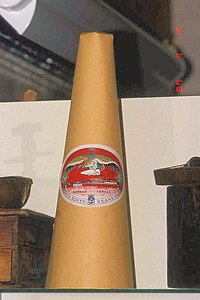
Photo from wikipedia
Abstract In many species, cannibalism is uncommon and involves nonselective consumption of conspecifics as well as heterospecifics. However, within their invasive Australian range, cane toad larvae (Rhinella marina) specifically target… Click to show full abstract
Abstract In many species, cannibalism is uncommon and involves nonselective consumption of conspecifics as well as heterospecifics. However, within their invasive Australian range, cane toad larvae (Rhinella marina) specifically target and voraciously consume the eggs and hatchlings of conspecifics, often extirpating entire clutches. In contrast, toad larvae rarely consume the eggs and hatchlings of native frogs. Here, we use laboratory studies to demonstrate that this selective consumption is triggered by species‐specific chemical cues: maternally‐invested bufadienolide toxins that otherwise defend cane toad eggs and hatchlings against predators. We find that these cues stimulate feeding behaviors in toad tadpoles, such that the addition of bufadienolide toxins to the water column increases predation on eggs, not only of conspecifics, but also of native anuran species that are otherwise usually ignored. In contrast, we find that cannibalism rates on conspecific hatchlings are high and unaffected by the addition of bufadienolide cues. The maternally‐invested toxins present in conspecific eggs may therefore be more easily detected post‐hatching, at which point tadpole feeding behaviors are induced whether or not additional toxin cues are present. As bufadienolide cues have previously been found to attract toad tadpoles to vulnerable hatchlings, our present findings demonstrate that the same toxin cues that attract cannibalistic tadpoles also induce them to feed, thereby facilitating cannibalism through multiple behavioral effects. Because native fauna do not produce bufadienolide toxins, the species specificity of these chemical cues in the Australian landscape may have facilitated the evolution of targeted (species‐specific) cannibalism in invasive cane toad populations. Thus, these bufadienolide toxins confer cost (increased vulnerability to cannibalism in early life‐stages) as well as benefit (reduced vulnerability to predation by other taxa).
Journal Title: Ecology and Evolution
Year Published: 2022
Link to full text (if available)
Share on Social Media: Sign Up to like & get
recommendations!